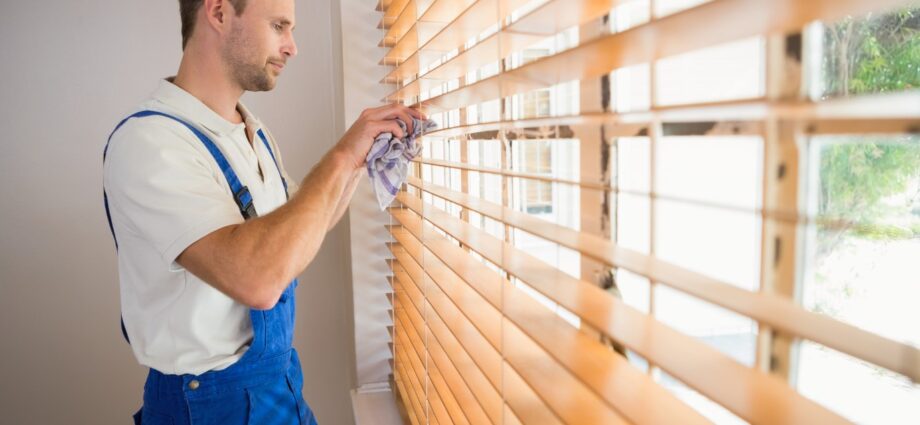Curtains are essential elements of interior design in both residential and commercial settings because of their elegant drapes and practical elegance· But for homeowners and decorators, their vulnerability to mold and mildew presents a regular problem· These unwanted visitors not only detract from the beauty of curtains but also lower indoor air quality, which may have an impact on residents’ health· To effectively combat the presence of mold and mildew infestations, it is essential to understand their nature·
We go into great detail in this guide on how to recognize, treat, and keep mold and mildew off of curtains. We hope to provide readers with the information and resources needed to keep clean, hygienic curtains, assuring both aesthetic appeal and well-being within interior spaces, by examining tried-and-true techniques and preventive measures, including curtain cleaning Singapore.
Mold and Mildew: A Brief Intro
Mold and mildew are types of fungi that thrive in warm, damp environments. They reproduce by releasing spores into the air, which can cause respiratory problems and allergies when inhaled. Mold and mildew can grow on various surfaces, including curtains, where they feed on organic materials like dust and dirt. Identifying the early signs of mold and mildew infestation is crucial to prevent their spread and mitigate damage to curtains.
Signs of Mold and Mildew Infestation
- Musty Odors: A damp, musty odor emanating from curtains is often an indicator of mold and mildew growth.
- Discoloration: Dark spots or patches on curtains, especially in areas with poor ventilation, may signal the presence of mold and mildew.
- Allergic Reactions: Respiratory issues, sneezing, coughing, and skin irritation experienced by occupants can be attributed to mold and mildew exposure.
Effective Curtain Mold and Mildew Treatment Methods
Regular Cleaning and Maintenance
The best way to treat mold and mildew on your curtains is to prevent mold growth in the first place. Clean your curtains regularly as per the manufacturer’s instructions. Machine-washable curtains should be placed in the laundry on a gentle cycle with mild detergent. Hand washables typically need to be gently washed by hand. Regardless of the curtain cleaning method, remember to ensure thorough drying afterward since mold thrives in damp conditions. The spray option, vinegar, is used afterward to clean the mold spores as well.
Spray Vinegar
Vinegar is a natural fungicide and disinfectant, suitable for removing mold and mildew. To make a spray, half and half vinegar, one cup of water, and one cup of white vinegar mixed into the spray bottle. After spraying, allow it to rest for a few hours before washing according to regular procedure. It is recommended since vinegar helps in the mold and mildew elimination process, aside from removing odors from the curtains.
Bleach Solution
If mold and mildew are persistent, the bleach solution is effective in eliminating the fungus. Mix one part of bleach with three parts of water to kill the mold and mildew. Before spraying, test the substrate for discoloration in an inconspicuous spot. Apply the bleach to the affected area with either a sponge or a piece of cloth before rinsing thoroughly and washing the curtains. Since the bleach potentially damages fabrics, have a spray bottle for spraying vinegar on the curtains.
Hydrogen Peroxide
In a bottle spray, an equal amount of hydrogen peroxide and water can help kill the mold and mildew on your curtain. Spray the solution on the affected areas on the curtain before washing to remove the mold fungus. Aside from killing, the hydrogen peroxide also removes the stain without damaging the fabric’s texture.
Preventing Future Infestations
In addition to treating existing mildew and mold, taking preventive measures is critical to avoid destiny infestations:
- Improve airflow in rooms with curtains with the aid of opening windows or the usage of exhaust fans to reduce moisture buildup.
- Use a dehumidifier to keep optimal humidity levels, mainly in humid climates or all through wet seasons.
- Avoid striking moist curtains, as moisture gives a conducive surrounding for mold and mildew growth.
- Regularly check out curtains for signs and symptoms of mildew and mold, especially in high-danger areas consisting of toilets and kitchens.
Final Words
Effective curtain mildew and mold remedy strategies are important for maintaining the beauty and hygiene of your curtains. Whether you opt for DIY remedies or expert cleaning services, spark-off action is prime to stopping in additional damage and safeguarding your fitness. By knowing the reasons for mold and mildew and employing the right treatment methods, you can enjoy clean, clean curtains for years yet to come.
Regular curtain dry clean and curtain cleaning in Singapore are important for preserving the sturdiness of your curtains and ensuring a healthy indoor environment. Don’t let mold and mold compromise the splendor of your house—take motion today to defend your curtains and your well-being. With proper care and renovation, you can hold mildew and mold at bay, permitting your curtains to decorate your residing spaces in fashion and cleanliness.
Conclusion
In conclusion, ensuring the effectiveness of your curtain mold and mildew treatment methods is crucial for maintaining a healthy and hygienic home environment. By implementing regular cleaning routines, using appropriate cleaning agents, and addressing any underlying moisture issues, you can effectively prevent and combat mold and mildew growth on your curtains. Remember to inspect your curtains regularly for any signs of mold or mildew and take prompt action to address them. Additionally, considering the effectiveness and convenience factors, it’s essential to weigh the pros and cons of DIY methods versus professional services when it comes to carpet shampooing.
While DIY approaches may offer cost-saving benefits, professional carpet shampooing services often provide more thorough and efficient results, especially for stubborn mold and mildew stains. Ultimately, the choice between DIY and professional carpet shampooing depends on your specific needs, budget, and time constraints. Regardless of the method chosen, prioritizing regular maintenance and effective treatment strategies will help keep your curtains clean, mold-free, and conducive to a healthy living environment.


